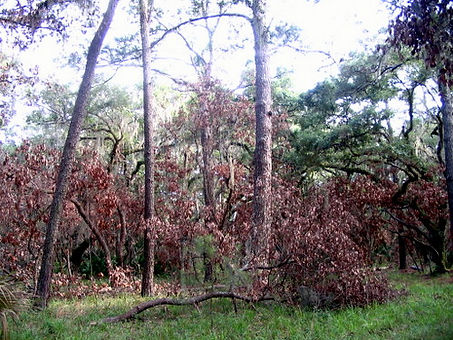
Redbay wilt
Invasive insects and fungal pathogens have triggered numerous declines in ecologically important tree species in the forests of eastern North America. Although now functionally extinct in many ecosystems, these tree species have been able to persist through sprouting or the presence of a low density of resistant individuals. In this study, we document widespread mortality of another dominant North American hardwood species, redbay (Persea borbonia, Lauraceae), from an exotic disease, laurel wilt. This disease is caused by a nonnative Asian ambrosia disease, Xyleborus glabratus, and its pathogenic fungal symbiont, Raffaelea lauricola, which were introduced to Georgia, USA in 2003. We conducted tree surveys on an island near the center of introduction from 2004 to 2009 and assessed the trajectory of tree mortality caused by laurel wilt.

Publication:
-
Evans, J.P., B.R. Scheffers, and M. Hess. 2014. Effect of laurel wilt invasion on redbay populations in a maritime forest community. Biological Invasions 16:1581-1588.
Media Coverage:
-
Savannah Morning News (Feb. 19, 2014): "Coastal Georgia tree 'ecologically extinct'" by Mary Landers

-
Redbay wilt

Additionally, we examined sprouting as a mechanism for persistence and whether changes in community structure occurred after laurel wilt introduction. We observed 98 % death of main stems and widespread mortality of genets (79 %) independent of main stem size. All remaining individuals were symptomatic of laurel wilt. Sprouting does not appear to give redbay the ability to maintain genets and recruit new stems into the forest canopy. We identified a negative interaction between laurel wilt and deer browse on stems and new sprouts, which may accelerate death rates of infected populations. If our results are applicable across redbay’s geographic range, a once abundant tree species may become ecologically extinct from coastal forest ecosystems in the southeastern U.S.




